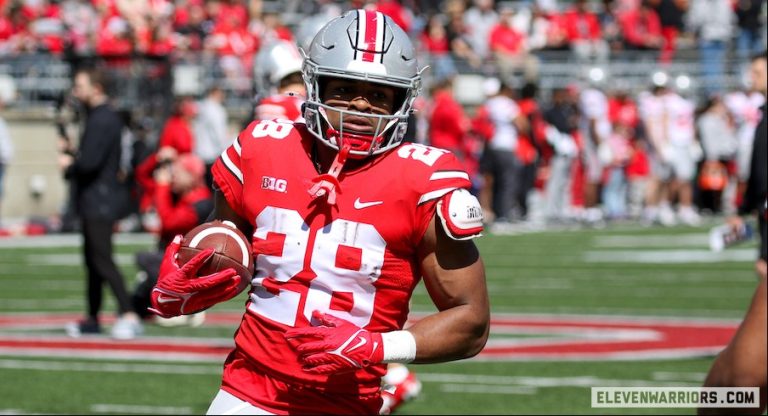Matthew Knies Leaves Maple Leafs Game After Hit by Zach Whitecloud, No Suspension After Review Deems Hit Clean
In a highly anticipated game between the Toronto Maple Leafs and the Vegas Golden Knights, an unexpected and concerning moment occurred when rookie forward Matthew Knies was forced to leave the game after taking a heavy hit from Golden Knights defenseman Zach Whitecloud. The hit came in the first period, and Knies, who had been an integral part of the Maple Leafs’ offensive setup this season, did not return to the ice after the collision. This incident sent a wave of concern through the Toronto bench and fanbase, with many fearing for the young player’s health and safety.

As the game continued, the question on everyone’s mind was whether the hit was legal or if Whitecloud would face disciplinary action. After an official review by the NHL’s Department of Player Safety, it was determined that Whitecloud’s hit was clean, leading to widespread discussion about the nature of the hit, the safety of players, and the league’s stance on hits of this nature.
This article will break down the incident, assess the nature of the hit, explore the impact on Knies and the Maple Leafs, and evaluate the NHL’s decision to clear Whitecloud of any wrongdoing.
The Incident: A Heavy Hit on Matthew Knies
The incident occurred in the first period of what was already shaping up to be a tense matchup between the Maple Leafs and the Golden Knights. At the time of the hit, Knies was skating toward the boards in pursuit of the puck, with Whitecloud positioning himself for a defensive play. As Knies reached the puck, Whitecloud stepped up, delivering a heavy shoulder-to-shoulder hit that sent Knies sprawling to the ice.
The collision itself looked devastating, and the immediate reaction from both teams suggested it was more than just a routine check. Knies remained on the ice for a few moments before slowly getting to his feet and making his way to the bench. The Maple Leafs training staff quickly attended to him, and it was determined that Knies would not return to the game, leaving the team without one of their brightest young forwards for the remainder of the night.
The Review: NHL’s Department of Player Safety
After the game, the NHL’s Department of Player Safety (DOPS) initiated a thorough review of the hit to determine whether Whitecloud had violated any league rules or protocols related to player safety. The review process, which involves a close examination of the hit from multiple angles, aims to assess whether the hit was clean or if any infractions, such as interference, charging, or an illegal check to the head, were committed.
The decision from the DOPS was clear: the hit was deemed clean. While Knies was visibly shaken up after the collision, the league concluded that Whitecloud’s actions did not constitute an illegal hit or a violation of league policies. Whitecloud had made a shoulder-to-shoulder check, and there was no significant contact with Knies’ head, which often triggers further scrutiny in player safety reviews. As a result, Whitecloud was not handed any supplementary discipline, and no suspension or fine was issued.
Clean Hit or Dangerous Play? A Closer Look
While the DOPS ruled the hit clean, the incident sparked debate among fans, analysts, and players about the nature of physicality in today’s NHL. The line between a clean hit and a dangerous play can often be blurry, especially in fast-paced games where players are making split-second decisions. So, was Whitecloud’s hit a textbook body check, or did it cross a line?
On one hand, the hit appeared to be legal under the NHL’s rules governing body contact. The collision was shoulder-to-shoulder, and Whitecloud did not extend his elbow or stick, which would have made the hit more dangerous or potentially illegal. Additionally, Knies had possession of the puck at the time of the hit, meaning the check was not considered interference. Whitecloud also did not leave his feet or target Knies’ head, both of which are key factors in determining the legality of a check in the NHL.
However, critics of the hit have pointed to Knies’ vulnerability at the moment of contact. At the time of the collision, Knies was not in an ideal position to protect himself, as he was focused on the puck and unaware of Whitecloud’s approach. The hit, while clean in terms of the letter of the law, could be seen as a reminder of how dangerous the sport can be when players are caught off guard in vulnerable positions. Critics argue that while the hit may have followed the rules, it nonetheless highlighted the risks involved in a high-speed, contact-heavy game.
The Impact on Matthew Knies and the Maple Leafs
For the Maple Leafs, the injury to Matthew Knies is a significant concern. As a rookie, Knies has been an instrumental player for Toronto, showcasing his skills on both ends of the ice and quickly earning the trust of head coach Sheldon Keefe. Known for his physicality, offensive upside, and defensive awareness, Knies had already shown early promise in his NHL career, and his absence could leave a noticeable void in Toronto’s lineup.
Although the specifics of the injury were not immediately disclosed, it was clear that Knies was in considerable discomfort after the hit. Following the game, Maple Leafs general manager Kyle Dubas provided an update, stating that the team was closely monitoring Knies’ condition and would provide more details after further evaluations. The hope was that the injury wasn’t serious and that Knies would return to the ice soon. However, given the nature of the collision, the Maple Leafs would likely take a cautious approach to his recovery.
While the team did not initially disclose the nature of the injury, the fact that Knies did not return to the game indicated that the hit had left a lasting impact. Whether it was a concussion, a shoulder injury, or something else entirely, the Maple Leafs will be eagerly awaiting further updates from the medical staff regarding the young forward’s recovery timeline.
The NHL’s Stance on Player Safety
The review of Whitecloud’s hit and the subsequent decision not to issue any punishment brought the league’s approach to player safety into the spotlight once again. While the NHL has made significant strides in recent years to reduce the number of dangerous hits to the head, many still believe that certain types of body contact—particularly when a player is vulnerable or unaware—should be penalized more harshly, even if the hit doesn’t technically violate the letter of the law.
This situation also highlights the complexity of the NHL’s disciplinary process. While the Department of Player Safety is tasked with maintaining the integrity of the game and protecting players from unnecessary harm, it also needs to adhere to the established rules. In this case, the NHL determined that Whitecloud’s actions fell within the acceptable range of body checking, even if some viewed the hit as potentially dangerous.
The controversy surrounding this hit, while it ultimately did not result in disciplinary action, underscores the ongoing debate about how the league can better protect players while preserving the physicality and intensity that make hockey unique. Some argue that the NHL must place greater emphasis on the safety of players, especially those in vulnerable positions, even if it means revising the rules surrounding body checking.
Conclusion
The hit on Matthew Knies by Zach Whitecloud was a significant moment in the Toronto Maple Leafs’ game against the Vegas Golden Knights, drawing attention both for the impact it had on the young forward and for the subsequent review by the NHL’s Department of Player Safety. While the league ultimately ruled the hit clean, it opened up a broader conversation about player safety, the risks of physicality in hockey, and how the league can continue to evolve in protecting its players.
For the Maple Leafs, the loss of Knies—if only temporary—represents a significant blow to their lineup, as the rookie forward has been a key contributor this season. The hope is that Knies will recover quickly and return to the ice, but the incident serves as a reminder of the dangers inherent in the sport.
As the NHL continues to grapple with balancing safety and physical play, the league’s handling of situations like this will continue to be scrutinized. For now, the focus is on Knies’ health, and the Maple Leafs will no doubt be hoping for a speedy recovery for their promising young forward.
